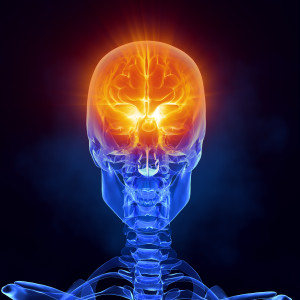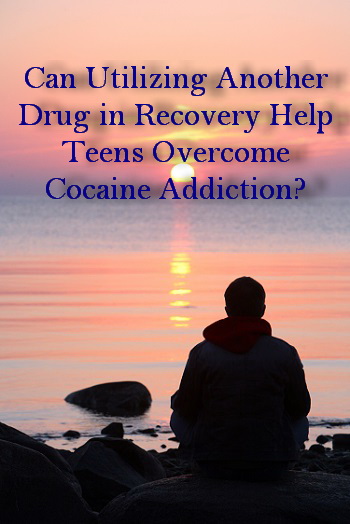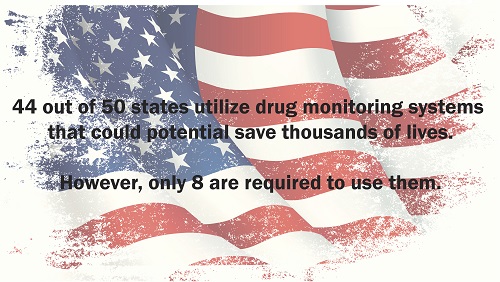29 Aug 2013
Drug May Help Teens Overcome Cocaine Addiction
Teens being treated for substance addiction may soon have a new tool to combat their drug problem. A new study finds that outcomes are improved for cocaine addiction treatment when the drug Topamax is included as part of the strategy for recovery.
Treating cocaine addiction can be challenging. Teens that begin using cocaine can become addicted quickly, and when treatment is sought and completed, relapse can be common. Teens often enter into a cycle of recovery and relapse with cocaine addiction.
Addiction to Alcohol
It is common for teens addicted to cocaine to also be addicted to alcohol. Abuse and addiction of both substances can make treatment complicated. For some, the traditional route of cognitive behavioral therapy is not an effective strategy for recovery to be a permanent state.
Topamax, a drug often prescribed for the purposes of treating epilepsy and, in more recent cases, weight loss, has been shown to help those attempting recovery from cocaine and alcohol addiction.
The Study
The research team from the University of Pennsylvania School of Medicine used a double-blind, placebo-controlled design to test the effectiveness of topiramate in treating addiction, particularly in cases where cocaine addiction is complicated with a dependence on alcohol.
Previous studies have proven the effectiveness of topiramate in treating alcohol addiction. Other studies have shown that it can help prevent relapse in those who have received treatment for cocaine addiction. However, this is the first study to explore its application in treatment for a combined addiction to cocaine and alcohol.
The study’s results are critical because those who struggle with cocaine addiction commonly also struggle with alcohol dependence. Targeting the addictions as a unit may be an effective strategy to make recovery more successful.
The study was conducted over a 13-week period that included 170 individuals who met criteria for alcohol and cocaine addiction. The trial produced mixed results.
The Results
The researchers discovered that the drug was effective at reducing the cravings for alcohol, but actual drinking did not decrease. It was not found to impact cocaine cravings.
However, the study participants that were taking topiramate were more likely to remain in treatment and avoid cocaine use during the last three weeks of the trial when compared to participants who were taking a placebo.
The researchers also found that participants taking topiramate were more likely to benefit from the drug if they reported more severe withdrawal symptoms. Those who indicated a high level of restless behavior, agitation and depressed mood were more likely to report benefiting from topiramate.
Counseling and the Drug
First author of the paper, Kyle M. Kampman, M.D., professor of psychiatry and medical director at the Charles O’Brien Center for Addiction Treatment, explains that while counseling is the first choice for addiction, there are some patients who are not responsive to this strategy.
The results of the study indicate that for those who have a particularly treatment-resistant addiction, the addition of a topiramate treatment in addition to cognitive behavioral therapy may result in better outcomes.
The study’s findings add to a growing body of research that supports the use of topiramate to aid in treating addiction. A previous study conducted in 2005 provided evidence that addicts treated with the drug were able to abstain from cocaine use for three weeks or longer.
The researchers note that the failure of topiramate to reduce alcohol use was puzzling, but may be explained by the severity level of that particular group of participants. The effects may be more visible when an individual has a habit of drinking heavily.
The Test Subjects
The study’s findings were the result of a trial conducted among a group of addicts who had an average age of 45 years and which was largely composed of African-American males. The groups of men examined using the drug of treatment and a placebo were similar in terms of sociodemographic variables or drug and alcohol use.
The findings of the study were published in a recent issue of the journal Drug and Alcohol Dependence.
Many state legislatures have enacted laws to make it easier for them to establish a prescription database to track drug abuse. These programs are often put in place to assist law enforcement in cracking down on illegal activity such as producing methamphetamine. Clandestine laboratories rely on large amounts of cold medicine to produce their dangerous substances that wreck lives. Most of that activity has been squelched by drug monitoring programs; another advantage to these programs affects more than just law enforcement.
The monitoring programs also help point the way to users who are likely abusing a prescription drug, which can lead interventions that are potentially life saving. These programs, which are now up and running in 44 states, have proven to be an invaluable tool for healthcare providers. They are now able to legally monitor the frequency of prescription drug use among their patients. The drugs being monitored include opioids, amphetamines and sedatives. But laws vary per state and only eight states currently require providers to participate in the monitoring programs.
What is certain is that the states that do allow a monitoring program have less of a problem with the current epidemic of pain killer abuse in this country. While not much is known about how the monitoring programs are affecting the way doctors prescribe their drugs, one study done in Ohio shows that more than 40 percent of emergency room doctors who had access to their patient’s prescription drug history made different prescription decisions based on the data from the monitoring program.
Almost all physicians are pressed for time, which means their ability to thoroughly study the data available to them is hampered. Furthermore, the amount of resources available to healthcare professionals to fully interpret the data providing by monitoring programs is also in short supply, limiting the impact that the data could have on the health of patients across the nation.
24 Apr 2013
Drug Addiction ‘Turned Off’ With Lasers
A groundbreaking study on rats from the National Institutes of Health may herald a revolutionary new treatment for cocaine addicts. By identifying a specific region of the brain that is diminished in rats susceptible to cocaine addiction, researchers were able to reduce their drug-seeking behavior by targeting the light from a laser onto the specific area. The effect is truly remarkable—by essentially reinvigorating the area in the brain, the drug-seeking behavior was notably reduced. If this is applied effectively to humans, it could provide a unique and effective approach to the treatment of numerous drug addictions.

Modeling Addiction in Rats
Research on rats might not seem like the best model for drug addiction in humans because of the obvious differences between us as species. However, it’s been found that the neural pathways in rats are nearly identical to those in humans, so rats are actually excellent models for addiction. Like humans, some rats display a tendency to become addicted to drugs while others don’t have the same problem. This is tested using a cocaine-dispensing lever, and it was found that some rats compulsively take cocaine while others weren’t particularly interested. The fact that the addicted rats continue to push the lever to get the drug even when it results in an electric shock to the foot further adds weight to the model. This research indicates that there is an underlying physiological reason that some humans become addicted and some do not.
Identifying the Region
The University of California researchers built on existing brain imaging research which identified that deficits in the pre-frontal cortex region were associated with drug addiction by looking at addicted rats. They compared the neuron firing patterns in addicted rats to those of non-addicted rats and confirmed that cocaine produces bigger defects in the addiction-prone animals. The precise targeting of the region enabled them to make specific alterations to see if it affected the animals’ behavior.
Treating the Condition
Making minute alterations to the functioning of specific areas in the brain is obviously challenging and potentially dangerous. By making genetic alterations and introducing light-sensitive compounds into the rats’ neurons, the researchers were able to make the biological equivalent of a switch. They did this in the brains of both the addicted and non-addicted rats so they were able to test the theory in two ways. Shining a laser light at the compound flicks the switch, activating or deactivating the specific region of the brain and therefore either creating or removing the defects seen in drug addicts.
The results confirmed the theory. When the “switch” was activated in the addicted rats—removing their inherent deficits—they didn’t press the lever as often for a dose of cocaine. Astoundingly, when the switch was deactivated in the non-addicted rats (mimicking the addicted brain) they actively used cocaine more. This is particularly important because it establishes a causal link between this defect and addictive behavior.
Applying it to Humans
Thanks to the similarity between human and rat brains, the research can be easily applied to humans, and clinical trials are already in the planning stages. However, lasers will probably not be used in the human version of the treatment, according to the researchers, with the preferred method being trans-cranial magnetic stimulation. This basically uses an electromagnet placed outside the scalp to achieve the same effect. The treatment is currently used for the treatment of depression, and could be easily adapted for the new purpose.
What Does It Mean for Treatment?
Cocaine addiction is one of the most challenging addictions to treat from a medical perspective, because there aren’t any FDA-approved medications which can be used for it. If this approach is shown to be successful in clinical trials, it could provide a valuable tool for rehabilitation centers all across the country. Medical treatments can’t fully address the multi-faceted issue of drug addiction, but by reducing cravings it allows counselors and other psychiatric professionals to deal with the underlying psychological issues that lead to addiction.
Although the initial research focused on cocaine addiction, the treatment could also be applied to other drugs. Different chemicals have different effects, but psychoactive drugs can be broadly classified as working through a similarity to natural compounds, often the “reward” chemical dopamine. This means that there is a great degree of similarity between different addictions (even when substances are not involved) and that making small modifications could allow the treatment approach to work with other drugs.
It is not a “magic bullet,” however. Drug addiction often results from things like poor methods of dealing with problems like stress or depression, and correcting the neurological differences doesn’t teach substance abusers better coping mechanisms. The non-invasive nature of the treatment is extremely promising, but it won’t “cure” the problem in the same way that drugs for opiate addictions haven’t stopped heroin abuse. However, the new research may provide a valuable component to a multi-faceted approach to treating drug addiction.
Choosing the best drug rehab treatment program can be a difficult endeavor. Whether you’re looking for addiction recovery for yourself or you’re helping a loved one make the choice, there are many considerations. One of the most fundamental decisions for many people is deciding between a faith-based Christian treatment program and a secular facility with no religious orientation.
Christian Rehab & Secular Rehab Similarities
Christian drug treatment programs really aren’t vastly different from secular rehab facilities. Regardless of the basic approach, you can expect trained medical staff to care for your needs during detoxification. Medical professionals will be on hand to provide 24/7 monitoring of withdrawal symptoms. They will also constantly assess for drug use-related concerns that may require hospitalization or other care.
In both kinds of facilities you’ll receive a range of treatments designed to address your emotional needs. Many facilities provide treatment for any underlying mental health conditions that can sabotage your recovery. For example, many people with substance abuse problems also struggle with psychiatric disorders such as major depression, posttraumatic stress disorder (PTSD), or other mood and anxiety disorders.
 Christian and secular drug rehab treatment programs are both designed to meet your physical needs as well. Addiction depletes your body of needed resources, sapping you of strength and energy, while making you feel physically ill. A quality addiction center, no matter what its approach, will help you rebuild your physical health. Depending on the individual facility, you might take yoga classes or go on nature hikes. Improving your physical well-being through exercise will bolster self-confidence and help your body release endorphins. Endorphins are your body’s own natural “feel-good chemicals.” They help keep your mood stable and enhance your sense of well-being.
Christian and secular drug rehab treatment programs are both designed to meet your physical needs as well. Addiction depletes your body of needed resources, sapping you of strength and energy, while making you feel physically ill. A quality addiction center, no matter what its approach, will help you rebuild your physical health. Depending on the individual facility, you might take yoga classes or go on nature hikes. Improving your physical well-being through exercise will bolster self-confidence and help your body release endorphins. Endorphins are your body’s own natural “feel-good chemicals.” They help keep your mood stable and enhance your sense of well-being.
You can also expect to find help developing an aftercare plan. The substance abuse recovery team may recommend sober living to make it easier to transition into a life that’s free from addiction. Additionally, no matter which type of treatment you choose, you might have access to services like job skills training, development of decision-making skills or anger management. Addiction specialists can also help you find additional treatment, such as marriage or family therapy that may be needed to address damaged family dynamics.
Being a Christian does not mean that sobriety can only start at a Christ-centered rehab program. Secular treatment facilities have helped many people, regardless of religion, find healing from addiction.
Christian and Secular Rehab Differences
The primary difference between a Christian rehab program and a secular one is that Christian drug rehab treatment offers a faith-based approach. In addition to tending to your physical and emotional needs, Christian rehab centers base their treatment on Biblical principles, often those found in the well-known 12-step process. They use these to guide addicts on their path to recovery. As you work with the treatment staff, you may go through a series of steps that include admitting your mistakes, taking responsibility for them, and asking forgiveness from others.
Christian addiction treatment centers are also ideally suited to handle issues of guilt, an emotion that weighs heavily on many addicts. Once your body is fully detoxed, it’s not uncommon to feel guilt over things you may have done while you were actively using or drinking. For example, a prescription drug addict may feel remorse for abandoning her children or a cocaine addict might be stricken with deep guilt for verbally abusing a family member. Christ-centered treatment programs are uniquely qualified to walk addicts through these intense emotions and find a way to ask for forgiveness from others and from God, as well as to forgive themselves. It’s critical to find this forgiveness; addicts who cannot are much more vulnerable to relapse.
Another advantage of seeking help from a Christian drug rehab treatment is the range of spiritual services they provide. Many centers offer activities like Bible studies, church services or Masses, spiritually-based support groups, and personal prayer and devotional time. You can expect to receive plenty of time for quiet reflection and meditation to help sort out the intense range of emotions you’re feeling.
Some Christian treatment centers may be the right choice if an addict either has no money or limited financial resources. Depending on the facility, it may be funded by religious communities or organizations rather than patient fees. As a result, these rehabilitation centers are able to provide quality treatment at a reduced cost.
When Christian Rehab May Not Be a Good Fit
While faith-based treatment centers have helped many heal, they may not be the right choice for some people. Nick’s story vividly depicts this:
Nick grew up in a “good Christian home” – at least by all external appearances. He, his parents and his two sisters went to church every Sunday morning and evening. His father was a deacon in the church, and his mother played the piano. Everyone thought they were the perfect family.
But behind closed doors life was far from perfect. Nick’s parents were extremely strict and rigid. Discipline was harsh, and, for Nick at least, often included being whipped with a belt. Nick and his sisters were obedient out of fear. Yet, despite good behavior, it was rarely good enough. Nick and his sisters were frequently berated for the smallest things – a missed crumb when wiping off the dinner table, a less than perfectly made bed, or a misspelled word on a homework assignment.
Between the yelling, the name-calling (e.g. “wretched child”, “devil’s child”), the whippings, and the constant lectures about going to hell for being such a horrible child, Nick became increasingly depressed. By his mid-teens he was using alcohol regularly. It helped numb the pain he felt. He obtained it from a friend whose parents entertained often and didn’t lock the liquor cabinet. Nick managed to hide his drinking from his unsuspecting parents; they were too involved in church activities to notice how lost and distant their son had become.
By the time Nick graduated from high school, he had a serious alcohol problem.
Fast-forward 5 years… Nick, who was now living halfway across the country from his parents, was on the verge of losing his job as a restaurant manager. He had shown up to work one too many times with alcohol on his breath. His boss, who had become a father figure to Nick, knew he was a good kid and didn’t want to fire him. So, he told him he had to get into alcohol rehab if he wanted to keep his job.
There were two treatment facilities in the area – both had excellent reputations. But, one was a “Christian” program. Nick bristled when he found that out. Although the staff was very pleasant, he opted to go to the secular program. He knew that, no matter how good the Christian rehab program was, he would “see” his father and mother in the staff and never be able to trust them. In fact, the mere thought of having the Bible “shoved down his throat” on a daily basis made him want to drink more than ever.
Nick wisely chose the other program and successfully completed rehab. He recently reached his three-year sobriety date, and celebrated with his fiancé over dinner.
While Nick’s childhood home situation wasn’t the norm, it certainly dictated many of the choices he made. One of his friends went to the Christian rehab program a year later and told Nick how great it was. Nick smiled and nodded, knowing deep down that he could attribute his sobriety – at least in part – to the wise decision he made to choose a secular treatment program.
There are several reasons Christian alcohol and drug rehab treatment might not be in your best interest, just as it wasn’t for Nick. These include the following:
- Did you grow up in a very strict Christian home? – If you were raised in an environment that defined godliness through punishment, you may not feel comfortable in a rehab program defined by its Christian principles. It can create significant internal conflict that may make it hard for you to focus on treatment.
- Did you grow up in a hypocritical Christian environment? – Conflicts can also sabotage treatment if you were raised by parents or caregivers who demanded Christian ideals from their children but acted in a very un-Christ-like manner themselves. You may find that you have a very difficult time trusting the staff. You’ll be vulnerable to viewing them through the age-old filters from your childhood, wondering if or assuming that they’re hypocrites – just like your parents.
- Did you try Christian rehab before but found conflict for these or other reasons? – Achieving recovery is a process, and it can take several tries before it’s successful. However, if you’ve tried Christian rehab and found that the basis of the program triggered conflict that got in the way of recovery, it might be time to try a secular addiction treatment program. Christian rehab can be a wonderful way to go for a lot of people, but trying to force yourself into a program that is going to trigger old issues or make you question the motives of every staff person, then it’s not going to help you – and could even make things worse.
The road to sobriety can be challenging; but it can be a little easier with the right team of professionals to provide support and resources. If you or a loved one needs treatment, reach out for drug rehab treatment—Christian or secular—before the addiction becomes worse and the consequences become increasingly severe. You can find healing. Make the decision to start now by choosing a program that feels right to you.
04 Apr 2013
Long Term Effects of OxyContin on the Brain
 Most drugs of abuse ultimately have an impact on the brain. The levels of the different neurotransmitters (the brain’s chemical messengers) are carefully balanced, so the brain can apply a reward chemical when a reward is in order and a painkiller when one is required. Drugs of abuse tend to subvert these normal processes, often releasing an excessive amount of the brain’s reward chemical. Finding out about the specific risks for one of the most commonly abused prescription drugs, OxyContin, helps you understand how addiction develops and the long-term risks of the drug.
Most drugs of abuse ultimately have an impact on the brain. The levels of the different neurotransmitters (the brain’s chemical messengers) are carefully balanced, so the brain can apply a reward chemical when a reward is in order and a painkiller when one is required. Drugs of abuse tend to subvert these normal processes, often releasing an excessive amount of the brain’s reward chemical. Finding out about the specific risks for one of the most commonly abused prescription drugs, OxyContin, helps you understand how addiction develops and the long-term risks of the drug.
What is OxyContin?
The simplest way to understand OxyContin is as an opioid drug like heroin or opium. It is derived from the same source, and has the same basic effects as these illicit substances. Opioids are widely used in medicine because they are among the most efficient pain relievers. Many people come into contact with drugs such as Vicodin, Percocet and OxyContin through legitimate means. The main defining feature of OxyContin is that it has a time-release formula, the effects lasting for about 12 hours. Percocet releases all of the substance at once and lasts only about five hours.
What are the Effects of OxyContin?
OxyContin works through its interaction with the opiate receptors in the brain. By binding to these receptors, the drug reduces feelings of pain and triggers the release of dopamine, the most important neurotransmitter in the brain’s reward system. This creates a mixture of euphoria and pain relief, bringing about a relaxed and contented mood in the user. It also depresses the central nervous system, which is responsible for many critical processes within the body, including heart rate, digestion, pain messages and breathing. Although the time-release formula makes it more difficult to achieve the euphoric high most users are looking for, many chew the drug or even inject it for a bigger rush. They will also take more than is suggested by their doctor to increase the effect.
 The Long-Term Effects of OxyContin on the Brain
The Long-Term Effects of OxyContin on the Brain
Addiction is the most evident effect of long-term OxyContin abuse on the brain. The brain is initially overwhelmed when the drug signals the extended release of dopamine, unable to continue its normal functioning because of the intense chemical injection. To account for this, as the drug is taken more regularly, the brain adjusts its natural processes so it isn’t overwhelmed anymore. By reducing the number of opiate receptors and producing less dopamine naturally, the brain effectively dampens the effect OxyContin has. This means that the user has to take more of the drug to achieve the same effect, and that without the drug, he or she will have a deficit in some neurotransmitters.
This effect creates addiction, because the brain has essentially rewired itself to account for the continued presence of the particular substance. Without it, the individual experiences a wide range of unpleasant side effects, known as withdrawal. The longer the individual takes the drug and the more that is consumed, the more the brain adapts and the individual becomes addicted. Although using OxyContin more than prescribed commonly leads to addiction, it can also develop from the suggested course of medication.
Many of the long-term effects of the drug come to the forefront during this withdrawal period. Withdrawal usually creates the opposite effect of the drug, so if a woman goes without OxyContin for the first time after months of abuse, she will experience severe pain, depression and flu-like symptoms such as loss of appetite, runny nose and sneezing. Irritability and mood swings are also common. Because of these effects, the cravings for another dose of the drug can be intense.
One of the main risks of any opioid drug is respiratory depression (or slowed breathing). This is because the drugs depress the central nervous system, which is responsible for breathing. The risk of this is greater in long-term users, those who take more of the drug than prescribed, and anybody who combines it with alcohol.
Finally, there is a risk of severe psychological disturbances in people who abuse OxyContin. In long-term users, hallucinations, delusions, and delirium have all been reported, in addition to mood swings and panic attacks. This doesn’t occur in all cases, but is often worse during withdrawal, when many users feel confused or disoriented. Memory issues or even amnesia can develop in long-term abusers.
Need for Psychological Support
Addiction is the major long-term effect of OxyContin use because it drives the individual to keep abusing the drug and thereby makes all of the other potential consequences more likely. Being able to recognize the signs of addiction is extremely useful, but the best way to minimize your risk is to take the drug as advised by your doctor. If addiction does occur, psychological support can help you overcome your issues and therefore reduce the risk of other ill-effects.
21 Sep 2012
Does Gradual Reduction of Substances Work?
One of the most contentious areas for debate around the issue of drug addiction is whether people should stop suddenly (going “cold turkey”) or gradually reduce their usage. The main issue is that the withdrawal symptoms caused by stopping abruptly could drive the individual back to the substance. In the past, this was seen as a necessary evil (almost a punishment) for the past addictive behavior. However, many people have recognized that gradual reduction could reduce withdrawal symptoms and help people get clean in the long run. Others argue that addicts will struggle to stick to a pre-designated amount of their chosen substance and therefore relapse is likely. Weighing up the evidence will help you determine whether gradual reduction is effective for addiction or not.
How Does Gradual Reduction Work?
The general theory behind gradual reduction programs is that the process of detoxification is much easier if you’re weaned off the substance incrementally. Most treatment programs use pre-designated dosages over a set time period, but these can be adapted to suit heavier users. The amount of the substance offered is reduced according to a fixed schedule until the individual has stopped using altogether. Instead of putting the body through the shock of complete abstinence after heavy use, this slower approach staves off withdrawal symptoms while still moving in the right direction. It’s like eating less and less food each day to lose weight instead of crash dieting.
What are Some Examples of Gradual Reduction Treatments?
Although people may use this approach at home with illicit drugs, alternative medicines are offered by drug rehabilitation centers for gradual reduction. The most well-known of these is methadone, which is used to help heroin (or other opiate) addicts kick their habit. It has longer-lasting effects that aren’t as strong as heroin, so it provides relief from withdrawal symptoms without having the same potential for abuse. The longer “half life” (duration of effects) of methadone translates into a longer period of withdrawal, but the symptoms aren’t as intense as from heroin, and the gradual reduction also makes this easier.
The most widely used gradual reduction treatments are actually for a legal addiction-smoking. Several nicotine products have entered the market, offering a gum or a patch that provides a small amount of nicotine over a long period. This reduces the cravings for cigarettes and provides a safer method of administering the nicotine (without the tar and myriad chemicals in cigarette smoke). While the withdrawal symptoms of smoking aren’t very severe in comparison to illicit drugs or alcohol, many people still choose to use a reduction program when they quit.
Do They Work?
Reviews of multiple studies into the effectiveness of gradual reduction or maintenance programs can draw more weighty conclusions because of the increased sample size and the ability to choose methodologically sound research. One review looked at six studies that compared methadone maintenance therapy with placebo (sugar pill) maintenance therapy and other non-medical approaches. The randomized studies provide evidence that methadone maintenance helps to retain patients in treatment and reduces heroin use compared to other approaches. It didn’t reduce criminal activity, but it is much more effective for treatment.
A review published by the Cochrane Collaboration compared reduction programs for stopping smoking with the cold-turkey approach. The researchers found that the reduction approach (whether by limiting the amount of cigarettes or using nicotine alternatives) is as effective as stopping abruptly. It’s important to note that both groups always received additional support, whether through informative booklets or counseling. Despite the comparable success rate, reduction is not often advised to people looking to quit smoking.
What is the Best Option for Getting Clean?
Both of the literature reviews provide evidence of the effectiveness of gradual reduction programs in both legal and illicit substances. The reason for this is clearly the aforementioned benefit of reducing withdrawal symptoms, as well as the process of gradually defeating day-to-day triggers rather than tackling them all at once. A smoker might prioritize his after-meal cigarette over the one waiting for the bus when he can only smoke one more cigarette during the day. In the process, the habit of smoking while waiting for the bus is broken. As the amount of the substance gets lower and lower, the specific cues to use are taken apart one by one.
Although reduction programs are effective, some people still prefer the abstinence approach. For most drugs (aside from extreme cases), the cold-turkey approach doesn’t carry significant risks, so it is usually an option. If the individual would prefer to gradually reduce, however, the evidence presents no reason to dissuade them. In cases with severe withdrawal symptoms such as heroin addiction, it actually appears to be better to manage down than to try and stop altogether. This is seemingly because of the sheer level of discomfort presented by the withdrawal symptoms.
There are obvious advantages to managing down if the withdrawal symptoms will be very unpleasant, but the true deciding factor is clearly the individual’s motivation to change. Either method has the potential to be effective as long as you are dedicated to getting clean. You shouldn’t feel mentally “weak” if you choose the manage-down approach, nor should you feel stubborn for deciding to go cold turkey. It is important to remember that there is no honor in enduring withdrawal symptoms, and you aren’t required to suffer extensively because you’ve been addicted or done bad things in the past. Choose the approach which works best for you.
29 Mar 2012
Health Insurance is Failing to Cover Drug Rehab
As an increasing amount of people are becoming addicted to drugs and alcohol, one would think the health insurance industry would be more open to covering treatment. That’s not the case, according to a recent report by the California Office of the Patient Advocate. In fact, health care plans in California are underwhelming in their treatment coverage for alcohol and drug dependency, according to a recent article.
Read More
05 Feb 2012
Bring Your Dog to Drug Rehab? Why?
Considering drug rehab but don’t want to leave your beloved dog behind? In some situations, this may seem like a ridiculous self-imposed barrier, designed to prevent you from going in for the treatment you know you need to begin your recovery journey. But it may not always be that. It could very well be that you have such an attachment to your dog and your pet brings you a great deal of solace that being able to bring doggie along to drug rehab might just be the best thing for you.




